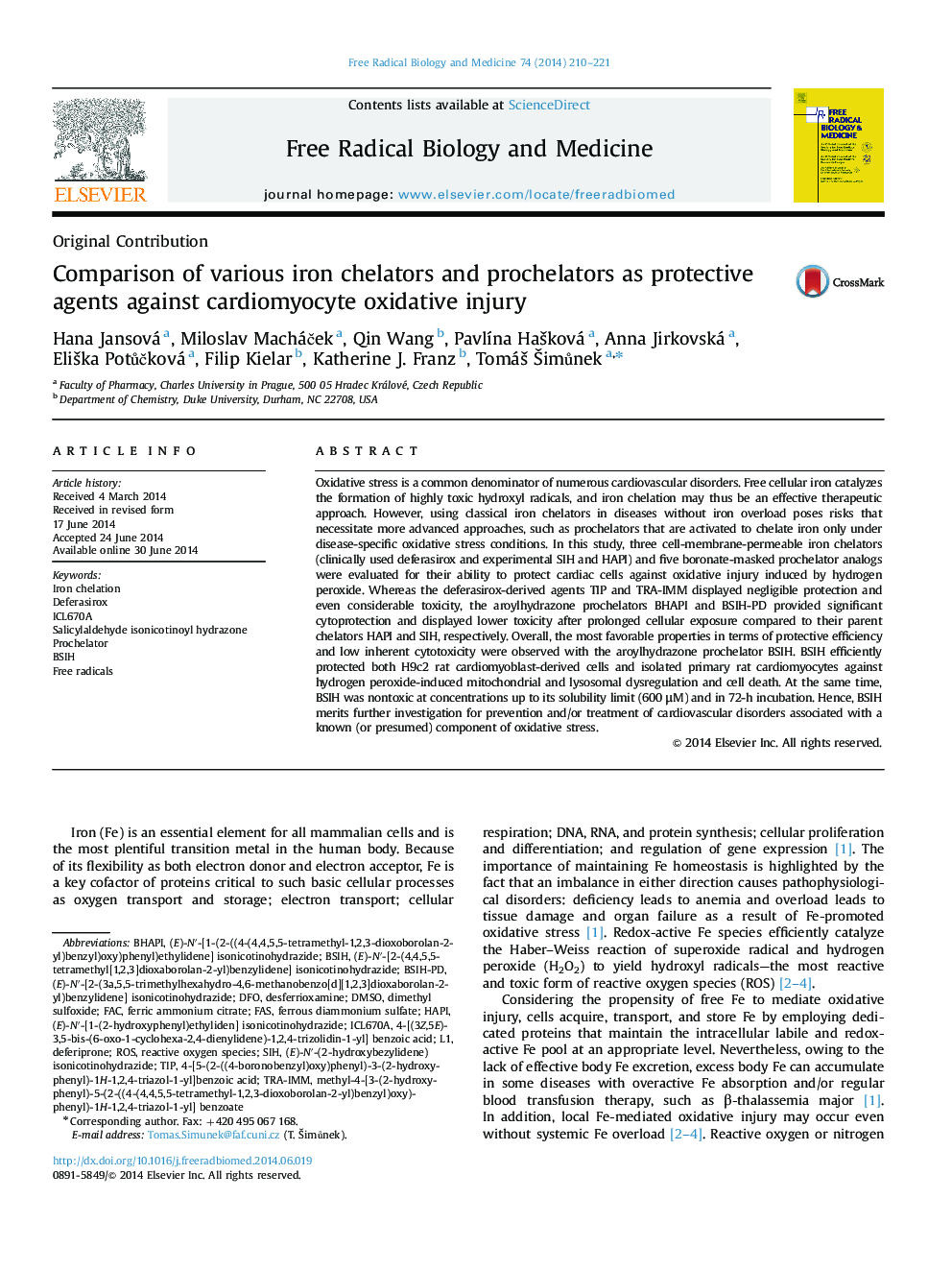| کد مقاله | کد نشریه | سال انتشار | مقاله انگلیسی | نسخه تمام متن |
|---|---|---|---|---|
| 1908306 | 1534968 | 2014 | 12 صفحه PDF | دانلود رایگان |
• We examined Fe (pro)chelators for their protection against H2O2-induced cardiotoxicity.
• The prochelators were derived from the chelators SIH, HAPI, and ICL670A (deferasirox).
• All chelators effectively protected H9c2 cells, but had dose-dependent toxicity.
• Prochelators derived from SIH and HAPI showed good protective efficiency.
• The best prochelator, BSIH, was protective and lacked inherent toxicity.
Oxidative stress is a common denominator of numerous cardiovascular disorders. Free cellular iron catalyzes the formation of highly toxic hydroxyl radicals, and iron chelation may thus be an effective therapeutic approach. However, using classical iron chelators in diseases without iron overload poses risks that necessitate more advanced approaches, such as prochelators that are activated to chelate iron only under disease-specific oxidative stress conditions. In this study, three cell-membrane-permeable iron chelators (clinically used deferasirox and experimental SIH and HAPI) and five boronate-masked prochelator analogs were evaluated for their ability to protect cardiac cells against oxidative injury induced by hydrogen peroxide. Whereas the deferasirox-derived agents TIP and TRA-IMM displayed negligible protection and even considerable toxicity, the aroylhydrazone prochelators BHAPI and BSIH-PD provided significant cytoprotection and displayed lower toxicity after prolonged cellular exposure compared to their parent chelators HAPI and SIH, respectively. Overall, the most favorable properties in terms of protective efficiency and low inherent cytotoxicity were observed with the aroylhydrazone prochelator BSIH. BSIH efficiently protected both H9c2 rat cardiomyoblast-derived cells and isolated primary rat cardiomyocytes against hydrogen peroxide-induced mitochondrial and lysosomal dysregulation and cell death. At the same time, BSIH was nontoxic at concentrations up to its solubility limit (600 μM) and in 72-h incubation. Hence, BSIH merits further investigation for prevention and/or treatment of cardiovascular disorders associated with a known (or presumed) component of oxidative stress.
Figure optionsDownload high-quality image (131 K)Download as PowerPoint slide
Journal: Free Radical Biology and Medicine - Volume 74, September 2014, Pages 210–221
